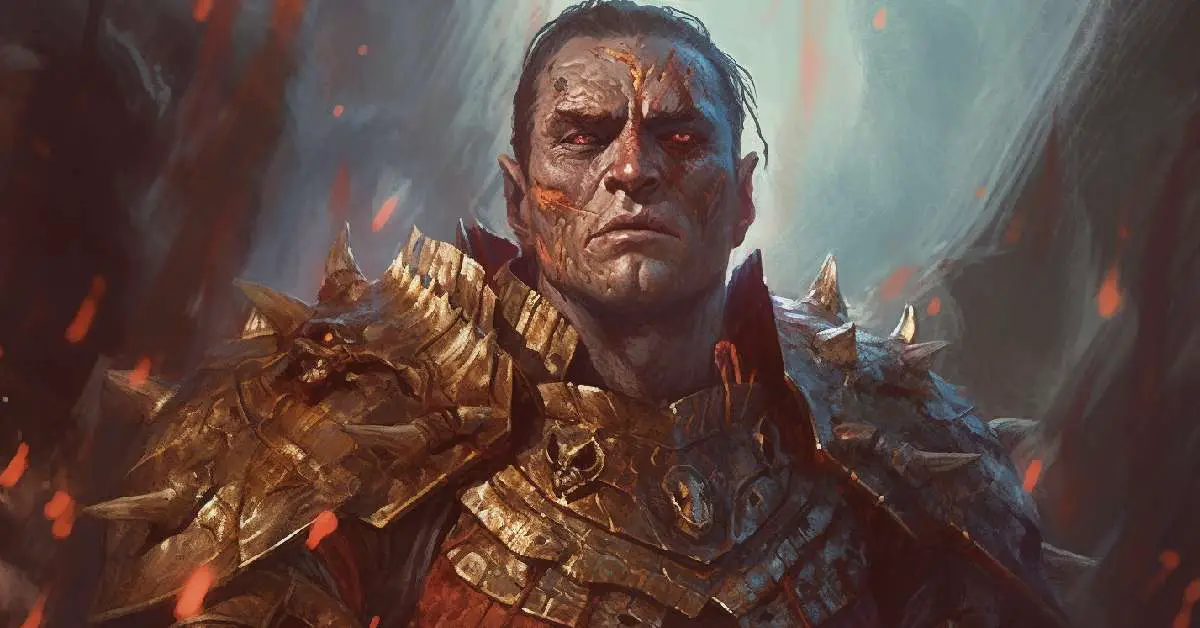
In the enthralling world of Dungeons & Dragons (D&D), adventurers are often faced with a plethora of conditions that could affect their journey. One such condition, known for its crippling effects, is the “stunned” state. It’s a predicament that can leave even the most seasoned adventurers in a tight spot, unable to act or react, turning a moment of thrill into one of distress. A firm grasp of these nuances is what differentiates a good player from a great one.
This article aims to demystify the stunned condition and provides an in-depth guide to the numerous strategies that can be used to overcome it. We’ll delve into the specifics of what it means to be stunned, how it affects your character’s abilities, and most importantly, the various methods that can be utilized to shake off this incapacitating condition. Whether you’re a neophyte embarking on your first quest or an experienced player looking to refine your tactics, this article has got you covered.
Understanding the game’s mechanics, particularly the status conditions like being stunned, is paramount to improving your gameplay. So let’s dive into the world of D&D 5E, unpack the mysteries of the stunned condition, and arm you with the knowledge to turn the tide in your favor.
This isn’t just about removing a condition; it’s about evolving your strategic approach to D&D. It’s about knowing when to charge into the fray and when to take a step back, about turning a moment of weakness into an opportunity.
Understanding the Stunned Condition
In D&D, the game mechanics often present players with various conditions that could alter the course of their adventure. The stunned condition is one such example that can throw a wrench into even the most well-laid plans. Understanding what this condition entails and its effects on gameplay is the first step towards effectively dealing with it.
A character is considered “stunned” when they’re overwhelmed to a point where they temporarily lose control of their actions. This could result from a powerful spell, a creature’s stunning attack, or a hard blow to the head. Regardless of the source, a stunned character faces significant impairment to their capabilities.
While stunned, a character can’t move and can speak only falteringly. The character automatically fails Strength and Dexterity saving throws, attacks against the character have advantage, and the character can’t take actions or reactions. This state of vulnerability can be alarming, especially during crucial moments of a campaign. Hence, understanding the mechanics behind the stunned condition isn’t just a luxury; it’s a necessity for any serious player.
How to Get Out of the Stunned Condition
As we’ve learned, being stunned can create a perilous situation for a character in D&D. It can abruptly halt the momentum of the game and place the character in a precarious situation. However, knowing how to navigate this condition can make all the difference between an unfortunate defeat and a triumphant victory.
Typically, the duration of the stunned condition is determined by the ability or spell that caused it. For example, a Monk’s Stunning Strike can stun a creature until the end of the Monk’s next turn, while a Mind Flayer’s Mind Blast can stun a creature until it can pass an Intelligence saving throw at the end of its turn. In these cases, the stunning condition ends when these requirements are fulfilled.
That said, there are other ways to remove the stunned condition. Spells like “Greater Restoration” can remove the stunned condition on a character, providing a lifeline in difficult encounters. Similarly, class features such as a Paladin’s “Lay on Hands” or a Druid’s “Wild Shape” can also help a character to shake off the stunned condition. Items like the “Potion of Vitality” or the “Rod of Alertness” can also prove useful in this situation.
Prevention, however, is often better than cure. Employing a good strategy to prevent being stunned is a crucial part of gameplay. This might include maintaining a safe distance from creatures known to stun their enemies, using spells that offer protection, or equipping items that provide immunity or resistance to stunning effects.
Strategic Gameplay to Overcome the Stunned Condition
In D&D, raw power and spellcasting prowess are only parts of the equation for success. Strategy and team dynamics play an equally significant role. When dealing with the stunned condition, it’s critical to leverage all of these aspects effectively.
Maintaining situational awareness is a cornerstone of strategic gameplay. Identifying potential threats that could inflict the stunned condition – such as a Mind Flayer lurking in the shadows or a Monk preparing a Stunning Strike – allows players to act proactively. This could mean positioning your character to avoid direct engagement or deploying protective spells preemptively.
Team dynamics also play a crucial role in overcoming the stunned condition. If a team member is stunned, quickly using spells or abilities to remove the condition can make a huge difference. For instance, a Cleric might cast Greater Restoration, or a Paladin might use Lay on Hands. Team members could also attempt to distract or draw away the enemy, mitigating the risks associated with the stunned character’s vulnerability.
Strategic use of spells and class abilities can also prevent the stunned condition. For instance, a Barbarian’s Relentless Rage can help them resist the condition, while a high-level Monk’s Diamond Soul provides proficiency in all saving throws, potentially helping them avoid becoming stunned in the first place. Similarly, a Rogue’s Evasion can help minimize the effects of certain attacks that might otherwise lead to a stunned condition.
Strategic gameplay isn’t just about responding to immediate threats, though. It also involves planning and foresight. Knowledge of an upcoming encounter can guide players in their preparation – choosing the right spells, equipment, and tactics. Having a contingency plan in place can make the difference between succumbing to the stunned condition and overcoming it.
The Role of Dungeon Masters (DM) in the Stunned Condition
In D&D, the Dungeon Master (DM) acts as the game’s storyteller and referee. They control the non-player characters, the settings, and the scenarios in which the players find themselves. With respect to conditions like the stunned state, the DM’s role becomes particularly influential.
Firstly, it’s up to the DM to accurately implement and maintain the mechanics of the game, which includes correctly applying conditions like “stunned”. The DM is responsible for determining when a creature is stunned based on the abilities used and ensuring that the effects of being stunned are appropriately applied.
At the same time, the DM plays a significant role in creating balanced encounters. They might introduce creatures capable of inflicting the stunned condition to challenge the players or provide opportunities for players to strategize and overcome these effects.
Additionally, a DM might introduce items or scenarios that can assist in removing the stunned condition. For example, during an adventure, the party could discover a “Potion of Vitality” that could be a lifeline during a tough battle. Alternatively, the DM might create an encounter where the players need to find creative ways to deal with the stunned condition, encouraging them to think strategically and use their abilities in innovative ways.
While the DM’s role can be challenging, it is also exciting and rewarding. The DM can creatively use conditions like “stunned” to enhance the gameplay, providing challenges for players to overcome and opportunities to explore different tactics and strategies.
Conclusion
In summary, dealing with the stunned condition involves a mix of understanding game mechanics, employing effective strategies, and good team play. It’s a challenge, but also an opportunity to evolve your strategic approach to D&D, enhancing your gameplay and overall D&D experience. So, let’s embrace these challenges, equip ourselves with the right strategies, and turn every gaming session into an exciting adventure!
| Key Point | Summary |
|---|---|
| Understanding the Stunned Condition | A character that’s stunned can’t move, can speak only falteringly, automatically fails Strength and Dexterity saving throws, and can’t take actions or reactions. Attacks against them have advantage. |
| Shaking Off the Stunned Condition | The duration of the stunned condition usually depends on the ability or spell that caused it. However, certain spells (like “Greater Restoration”), class features (such as a Paladin’s “Lay on Hands” or a Druid’s “Wild Shape”), and items (like the “Potion of Vitality”) can help remove it. |
| Preventing the Stunned Condition | This could involve maintaining a safe distance from threats, using protective spells, or equipping items that provide immunity or resistance to stunning effects. |
| Strategic Gameplay | Maintaining situational awareness and understanding team dynamics can play a major role in overcoming the stunned condition. Strategic use of spells, abilities, and positioning can help both in prevention and recovery. |
| Role of Dungeon Masters (DM) | The DM is responsible for accurately implementing game mechanics, including the stunned condition, and can influence gameplay by balancing encounters and introducing elements to assist or challenge players. |




